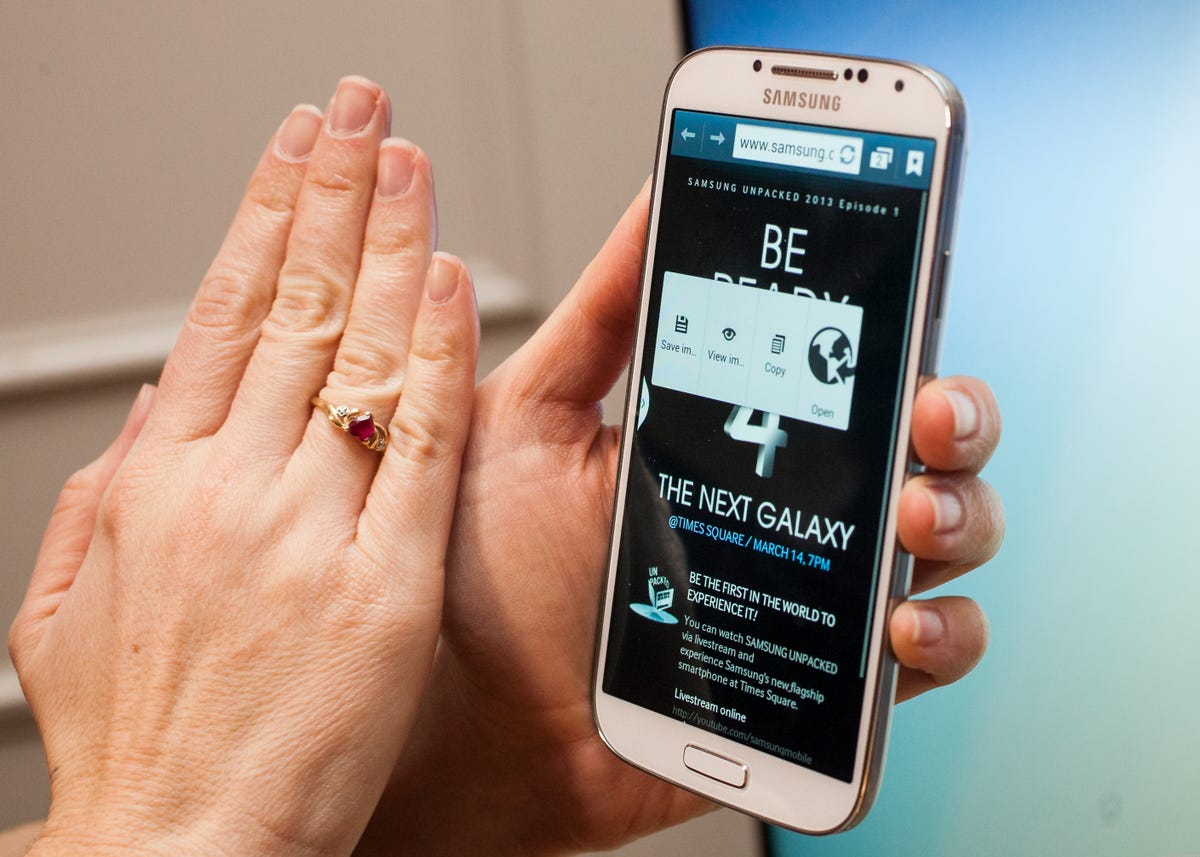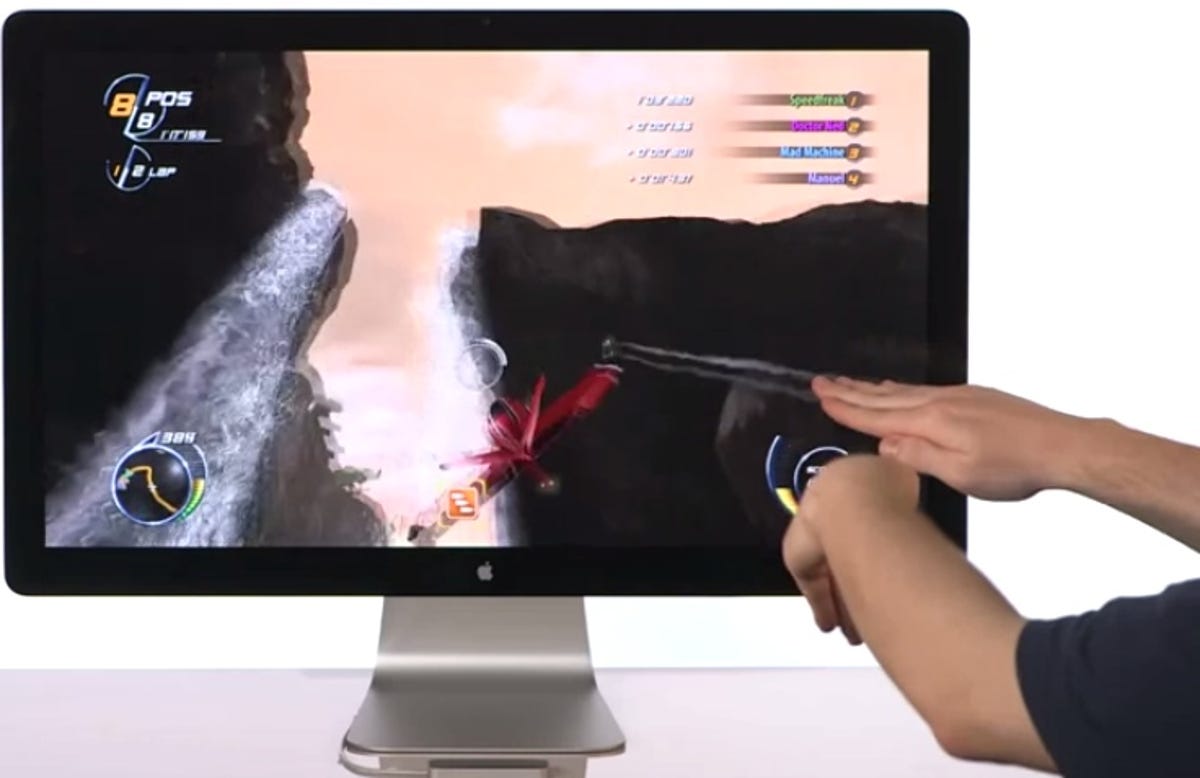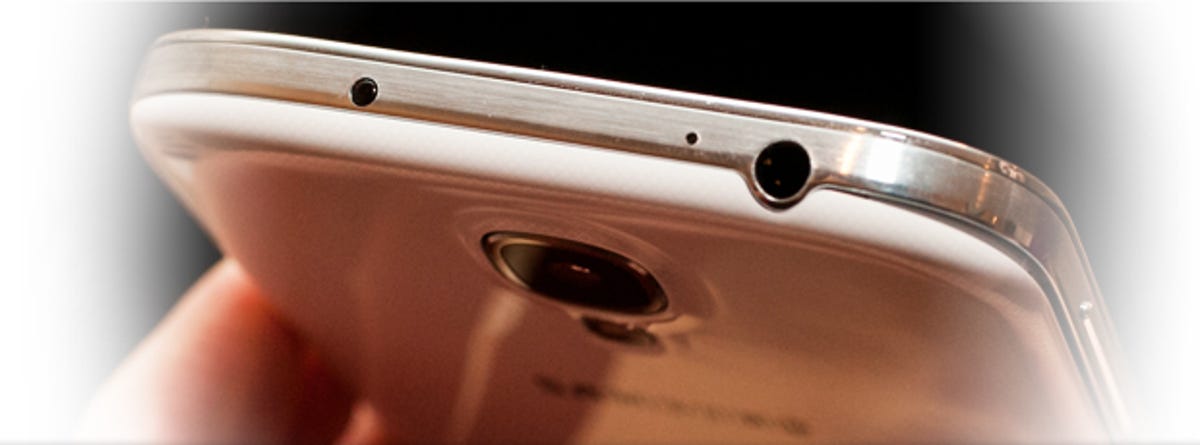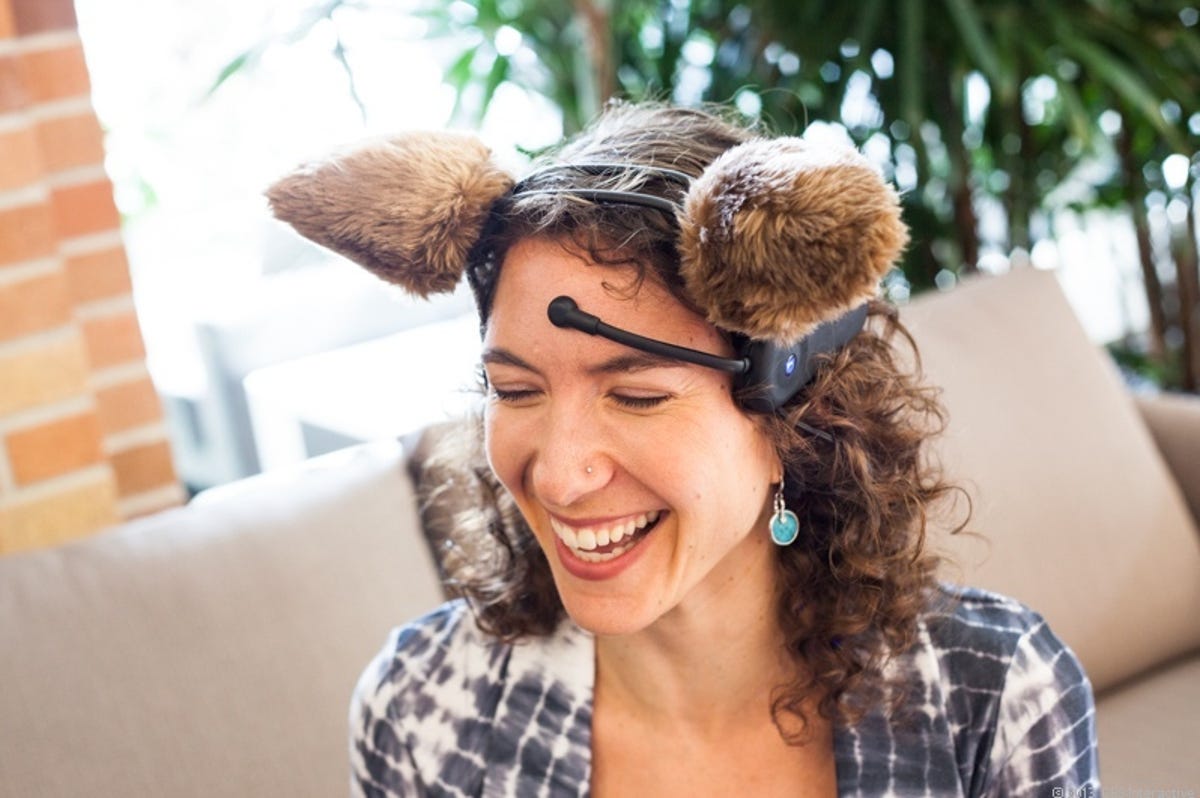The HTC One has a gorgeous chassis and a ton of camera tricks, the Samsung’s Galaxy S4 pauses and unpauses video when you avert your gaze, and in the Lumia 920, Nokia was one of the first to introduce wireless charging and an ultrasensitive screen you can control while wearing gloves.
Yet compared with the real meat of what you do with a phone — things like communicating with people, browsing the Internet, snapping photos, and playing games — today’s top phones are mostly all on par. Software and hardware extras that extend beyond the basics, while impressive, convenient, likable, and even useful, still amount to fancy filler.
All of today’s technology will certainly improve: cameras will get sharper and clearer, processors faster, screens stronger, and batteries longer-lived. But in tomorrow’s tech world, that “filler” may be the more compelling story.
With his shaggy, sandy blond hair and a 5-o’clock shadow, Mark Rolston, the creative director for Frog Design, has studied technology for the better part of two decades. As he sees it, smartphones are just about out of evolutionary advances. Sure, form factors and materials might alter as manufacturers grasp for differentiating design, but in terms of innovative leaps, Rolston says, “we’re at the end of gross innovation for smartphones.”
That isn’t to say smartphones are dead or obsolete. Just the contrary. As Rolston and other future thinkers who study the mobile space conclude, smartphones will become increasingly impactful in interacting with our surrounding world, but more as one smaller piece of a much larger, interconnected puzzle abuzz with data transfer and information.
We’ll certainly see more crazy camera software and NFC features everywhere, but there’s so much more to look forward to besides.
Sensitive sensors track the world in real time
Read more Smartphones Unlocked
- Hulk-strong screens, IR blaster, NFC-everything
- 6 things I want from NFC
- What it really takes to make a flexible phone
- How to sell your phone for cash
- Your smartphone’s secret afterlife
- Smartphone batteries: Problems and fixes
- 5 things you didn’t know about data testing
- The ABCs of smartphone screens
- Why more camera megapixels aren’t better
You may have never given two thoughts to the sensors that come on your smartphone. They don’t mind. They’re still there anyway, computing data on your phone’s movement and speed, rotation, and lighting conditions.
These under-appreciated components — the gyroscope, accelerometer, magnetometer, and so forth — are starting to get more friends in the neighborhood. Samsung, for instance, slipped pressure, temperature, and humidity sniffers into the Galaxy S4.
They may not be the sexiest feature in your phone, but in the future, sensors like accelerometers will be able to collect and report much more detailed information.
Imagine an air quality sensor on a smartphone suggests David Harris, social change agent at Institute for the Future in Palo Alto, Calif. Much like the Waze app crowdsources city maps and traffic conditions, sensors like the one Harris proposes could collect incredibly useful data about air quality around the world. That, in turn, could be used to monitor global climate change, or perhaps pollutants or allergens, through a network of smartphones.
Down the street at Ideo, Dave Blakely, the senior director of technology strategy, agrees. “The desire for the quantification of environmental factors is a big one,” he said.
In addition to air quality, temperature and speed of movement are also biggies. Blakely also sees a future where electrical and health sensors built into the smartphone can track your pulse, or even double as an EKG, turning your everyday handset into a medical device.
‘Appcessories’
An extension of the smartphone as medical device is what Ideo’s Blakely terms “appcessories,” a set of highly specialized peripheral software that fulfills very targeted needs, stuff that most people wouldn’t want on their everyday phone.
Let’s say you’ve downloaded an art app that maps out a paint-by-numbers schematic of your favorite Picasso. Now let’s say you’ve bought an after-market appcessory, a tiny pico projector with an NFC chip installed that, when you slip it onto the phone, beams out the image onto your surface so that you can get to work on your painting, or vegetable garden planting, or DIY home project.
Rise of gestures and touch-free input
Casting a sidelong glance to pause a video and bringing your finger to pursed lips might make you snigger, but gestures and other nontap inputs are on the rise.
For years, smartphones have included some sort of indirect input, like silencing sound when you flip the phone over, or dialing with your voice. Taken in a wider context, gestures and voice comprise a wider world of multimodal input — basically, anything that isn’t your finger tapping at buttons on the screen.


Sarah Tew/CNET
Gestures and voice may be starting the trend, but other, more sophisticated transitions and input methods will soon move from wacky option to normal ways of interacting with devices. For instance, calling up the Galaxy S4’s S Voice Drive app already assumes you’ll be speaking instructions rather than typing. On a drawing program, using your finger or a stylus may be the best way to go about.
What if launching a game automatically activated eye-tracking sensors for enhanced play, and what if tapping the phone to an NFC receiver on your car turned on motion control that let you mute or amplify volume on a phone call or the radio with a wave of your hand?
Then there will be the apps or tasks that will seamlessly switch from manual to voice to text to gesture-based inputs depending on what the app is and what you’re doing. Let’s say you launch a fitness app by tapping. When it senses motion, it switches to voice commands. At the end of the exercise when you’re weak and uncoordinated, you could wave your hand above the screen to drill down into stats.


Screenshot by Jessica Dolcourt/CNET
What if, in order to authorize a payment, you’ve set up your phone to bump the device against a surface while simultaneously giving a voice command?
In addition to gestures we already know about, like bumping and waving, companies are hard at work adding tracing and body movement to the mix. There’s Microsoft Kinect, of course, a gaming console that uses your moving body as the controller. In a more limited vein, Samsung has extended its software for recognizing a hovering stylus, to the human finger. On devices like the Galaxy S4, you can now point your finger right above the screen to preview a browser tab, photo, or video.
Leap Motion is another company working with gestures this way. The standalone sensor, imagined for use with a large screen monitor or TV, responds when you pinch your fingers for a zoom, point, draw, or trace. This is the kind of sensor that could easily find its way into a smartphone or tablet. (Click the link above to watch the YouTube video demo. The delayed Leap box comes out later this month.)
The larger ecosystem
If you’ve made it this far, you’ll start seeing a general theme: in the forward-looking smartphone environment of our future, our devices are anything but isolated.
Instead, smartphones will come with more components and communications tools to interact more than ever before with people and other devices. We already see some communication with Wi-Fi Direct, Bluetooth, and NFC communications protocols, plus newcomers like the Miracast standard.
In short, the kind of innovation we see in the mobile space may have more to do with getting your smartphone to communicate with other computing devices in the ecosystem than it will have with how many megapixels or ultrapixels your camera lens possesses or what kind of leather was used to finish the chassis.


CNET
Smartphones of the future could use sensors and machine language to recognize other objects around them. What if leaving your phone in the car for 5 hours triggers a reaction where the phone calls or e-mails to tell you where it is? When someone places his handset on the table too close to yours, it might buzz and flash red, because you’ve set preferences for it to do so.
As we’re sitting on orange and gray chairs in CNET’s spacious coffee shop/break room, Mark Rolston, Frog Design’s creative director, paints a compelling picture of smartphones acting as social tools in the real world. Let’s say you’re in a bar or at a conference and you want to meet people, he says. Extremely precise sensors track exactly where you are indoors. Point the phone toward a person in the crowd and her pertinent information pops onto the screen: who she is, what she does, and maybe some background.
You’re now using your phone as a social tool in the real world, not just on a social network, and none of the information you’re broadcasting is creepy because you’ve gone through preferences and told your phone exactly what it can share or not. When you approach someone, the basics are already worked out and you can get down to the business of having a conversation.
Wearable tech and you
Into the coffee shop of tomorrow walks a techie of tomorrow.
He or she is decked out in wearable tech from head to toe — the Bluetooth earring or ear cuff tucked into a lobe; Google glasses beaming up maps and directions; a smartwatch that takes your vitals, deals with mobile payments, and serves as a console for the most important functions. Then there’s the smartphone slipped into the pocket for more complicated tasks or to serve as a “big” screen, and the smart shoes that calculate distance, underfoot conditions, and analyze your gait.
Your smartphone is still there, still essential for communicating with your environment, but it becomes only one device in a collection of other, even more personal or convenient gadgets, that solve some of the same sorts of problems in different or complimentary ways.


James Martin/CNET
The scenario above isn’t all that outlandish, especially given the rise of smartwatches, which still have a ways to go before becoming truly well-rounded devices.
Crazy tech that interacts with your body has been in development for some time. To illustrate the point, Frog’s Rolston brought a pair of Necomimi Brainwave Cat Ears to our interview. The fuzzy “ears,” which have been on sale for about two years, sit atop a headband. A sensor protrudes from the band onto your forehead and a dangling clip closes the circuit when you attach it to your earlobe.
The cat ears swivel and twitch in concert with your brain waves, a bizarre and surprisingly giddy sensation. Necomimi’s contraption isn’t particularly useful or flattering, but its brain-reading sensors underscore the kind of close, personal interaction that can occur when tech “talks.” Paired with a smartphone app, what could this contraption share about our brains when we wake or sleep?
Pair a hair piece with a glittery app-controlled LED display and you have a futuristic barrette that lights you up like Christmas.
The point is this: smartphones aren’t going anywhere. But instead of a focusing on the world within the phone’s screen, the smartphone of tomorrow will be tuned more than ever before to the world around you.


CNET
Smartphones Unlocked is a monthly column that dives deep into the inner workings of your trusty smartphone.



